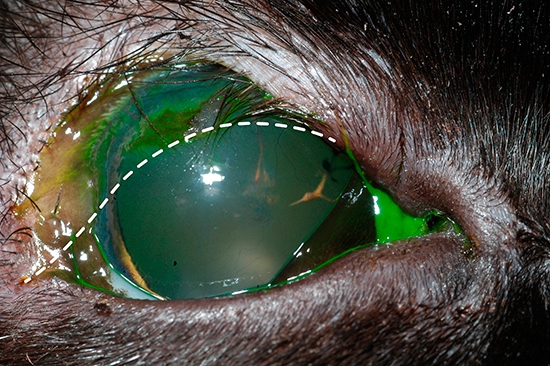Veterinarian ophthalmologists correct eyelid agenesis in cat

Dotted line shows placement of Billie's future eyelid.
It started with some research on how to correct eyelid agenesis, a congenital defect that causes patients to be born without upper eyelids. Then came practice on cadaver cats, followed by the real thing: the delicate surgery.
This month, the University of California at Davis (UC Davis) reported the success of the corrective surgery, not only for its veterinary ophthalmology team but also for a 9-month-old female domestic shorthair cat named Billie.
Several different options are available to treat eyelid agenesis. Hair follicles can be frozen by cryoepilation. Lubricants can be applied to protect from dryness. But even with these, the eye still remains prone to infection or injury and potentially blindness. Additionally, most surgical procedures do not result in the ability to blink the eyelid.
Billie’s eyelid agenesis was extensive and caused chronic irritation to the surface of both eyes. She couldn’t close her eyes completely. It also caused hair in that area to rub on her cornea, constantly irritating and inflaming her eyes. She was, in fact, a good candidate for corrective surgery.
UC Davis had never performed the surgery but their research revealed a procedure that involves removing tissue from the cat’s cheek and lips and transplanting it as an eyelid. (Tissue taken from around the mouth is the ideal match because hair in that area grows away from the mouth and would thus grow away from the eyes in the new area.)
Members of the Ophthalmology Service practiced the transplant technique, known as a lip commissure to eyelid transposition, on cat cadavers first. Then, they performed the procedure on Billie.
The surgery on Billie was a success. Post-surgery, she steadily improved. At her two-month recheck appointment, Billie was able to blink both eyes, and the sutured areas looked dramatically better. All of her hair around the affected areas, which was clipped prior to the surgery, grew back—away from her eyes.
Photo courtesy of UC Davis



